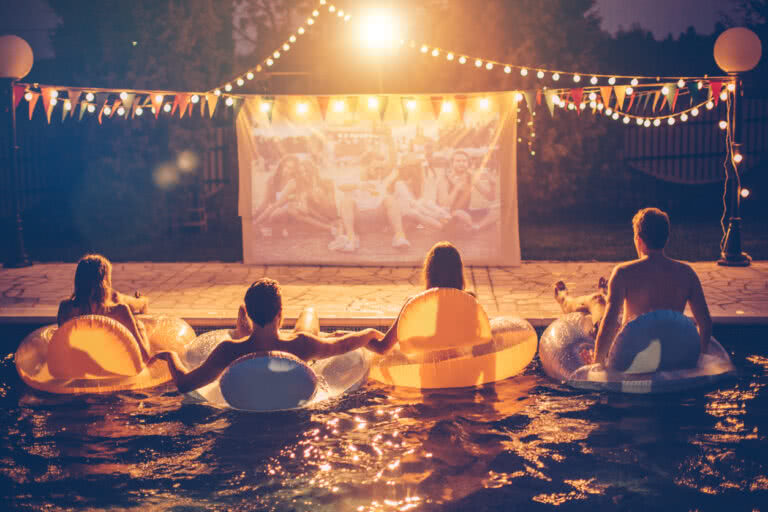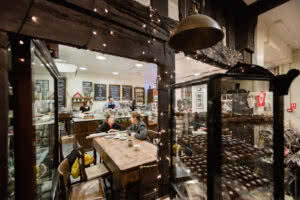In an ever-expanding digital age, cinema is repeatedly being condensed down and experienced in more ways than ever before. From mobiles and tablets to virtual reality headsets and home cinemas, more than ever cinema needs to prove its adaptability when it comes to exhibition.
It’s now more important than ever for film event organisers to entice audiences and provide a tailor-made experience in contrast to the bland and extortionately priced local multiplexes which must continue to compete with the popularity of monthly subscription fee services.
Legendary American director Martin Scorsese believes that “Now more than ever we need to talk to each other, to listen to each other and understand how we see the world, and cinema is the best medium for doing this.”
Let’s take a look at some examples of organisations, venues and communities who are warping perceptions of where and how we can engage with cinema, incorporating bespoke events and unique big screen experiences in the most unlikely of places.
- Screening in a Cave: Sheffield Doc/Fest
In 2014 Sheffield Doc/Fest, the world’s third largest international documentary film festival, demonstrated the power of location when it comes to creating a unique and enticing cinematic experience. A six-day festival that takes place in June, Doc/Fest has been running for almost 25 years and is known for its late-night parties, its pioneering Alternate Realities strand and its impressive Marketplace, on top of besides its compelling film programme.
The 2014 festival included a screening of Werner Herzog’s Cave of Forgotten Dreams within The Peak Cavern, a location more amusingly known as The Devil’s Arse. This was just one of multiple screenings Doc/Fest has hosted here but above all others this seems the most immersive. A film that gained access to the world’s earliest surviving drawings and painting, Cave of Forgotten Dreams is a celebration of mankind’s imagination and a reminder of the hidden memories that can be found in our natural surroundings. To bring an audience so close to local landscape whilst also immersing them in documentary cinema is a very special thing to have envisioned and accomplished.
- Cinema on the Steps: They Eat Culture
Preston based not-for-profit organisation They Eat Culture thrive to engage their local community through arts and culture. In 2013 they exhibited a variety of films, chosen by the public on the steps of the Harris Museum & Art Gallery. It included comical classic Some Like It Hot and an immersive family screening of Ghostbusters.
The programme created a cinematic hub within the busy local square and is a wonderful example of how placing event cinema right in the centre of local life can engage audiences from across the local landscape. What I find particularly inspiring about this type of work from They Eat Culture is its inclusivity; evidently open to all without forcing disengaged audiences to participate.
They also run fortnightly local cinema club and an ongoing pop-up film programme with local organisation, The Foxton Centre which supports rough-sleepers, sex-workers and individuals with drug and alcohol abuse issues; a further example of their use of unconventional cinema screenings to support and improve the lives of the local community.
- Cinema in the Tent: Glastonbury’s Pilton Palais
Renowned for its star-studded headline acts, muddy mayhem and vast size, Glastonbury Festival has a lot more to offer than what we typically see on the television coverage. From opera to circus acts to contemporary dance, Glastonbury is awash with a thriving art scene, suitable for all ages.
A hidden gem of the festival is the Pilton Palais, a hay-filled haven for any cinephiles who want a break from the crowds and the music. From family favourites to late night documentaries, the tent is a utopia for cinephiles whilst also bringing in family audiences for a well-earned sit down as well as an audio-visual experience. From retrospectives to director Q&As to national premieres, Glastonbury’s cinematic extravaganza proves that there is room and demand for big screen cinema even amidst the chaos of the British mud and music scene.
- Bombed Out Church: Liverpool
For the last ten year’s St Luke’s Church, Liverpool has been operating as a multi-disciplinary venue showcasing cinema, music, theatre and more. A wedding venue, a gallery space, a café; the venue is on a mission to prove its value to the local community. When one considers their Valentine’s Day plans it rarely involves sitting in a roofless, dilapidated church but in 2015 that’s what many people across Liverpool did thanks to the church’s screening of Breakfast at Tiffany’s. Whilst across the country multiplex cinemas were crammed full with mainstream audiences watching Fifty Shades of Grey, it was easy to feel disheartened about the future of cinema exhibition. Yet, events like the one above give cinephiles (film buffs) like me a lift; evidence that classic cinema and unconventional venues can merge harmoniously to create a unique event and a charming alternative to the corporate big screen takeover.
In Conclusion
From film festivals to local not-for-profit production companies, it is evident that strong event-management, original ideas, and powerful cinema is capable of surprising and delighting audiences. As cinema experiences continue to shrink down for new technologies, it’s satisfying to see that big-scale cinematic events continue to thrive throughout the UK. Projecting movies into the most unlikely of places also serves as a reminder of the social pull of cinema and its ability to bring communities together. So be inspired and continue to pave the way for the most unique and engaging film experiences that will ensure the big screen stays with us throughout the digital age.





